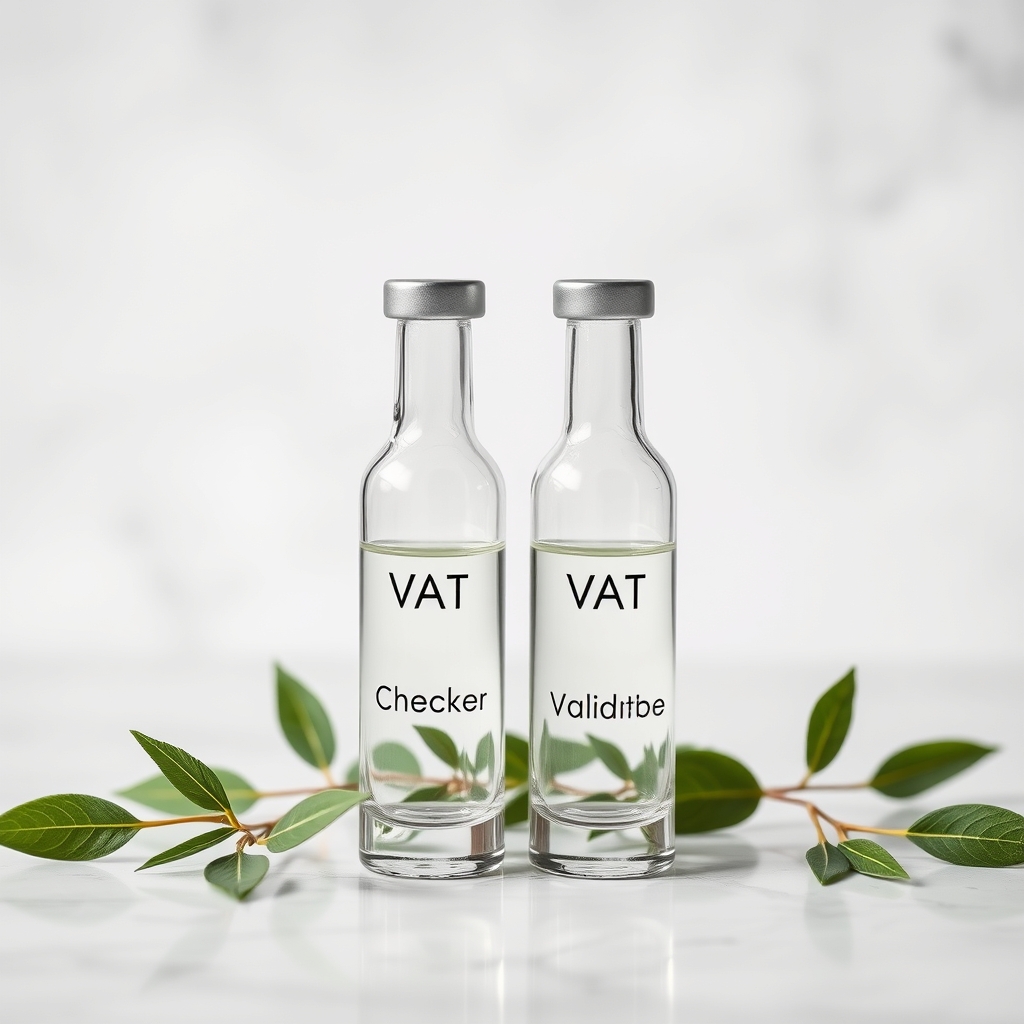VAT Checker API vs VAT Validation API: What to Choose?

When it comes to managing VAT (Value Added Tax) compliance in the European Union, developers often face the challenge of choosing the right API for validating VAT numbers. Two popular options are the VAT Checker API and the VAT Validation API. In this blog post, we will delve into a detailed comparison of these two APIs, exploring their features, use cases, performance, and ultimately helping you decide which one is best suited for your needs.
Overview of Both APIs
VAT Checker API
The VAT Checker API is designed to verify the format and validity of VAT numbers across the European Union. It not only checks if a VAT number is valid but also retrieves detailed company information associated with that VAT number, such as the company name, address, and country code. This API is particularly useful for businesses that need to ensure compliance with VAT regulations and avoid costly errors in transactions.
VAT Validation API
The VAT Validation API serves a similar purpose, allowing users to determine the validity of any VAT number. It provides a fast and reliable way to validate VAT numbers and offers additional company information if the VAT number is valid. This API is ideal for applications that require real-time validation of VAT numbers during transactions, ensuring that businesses maintain accurate records.
Side-by-Side Feature Comparison
VAT Validator Feature
Both APIs feature a VAT validation capability, but they differ in their implementation and the depth of information provided. The VAT Checker API includes a comprehensive VAT Validator feature that requires users to submit a VAT number as a parameter. Upon validation, it returns a detailed response that includes:
{
"country_code": "IE",
"vat_number": "8256796U",
"format_valid": true,
"checksum_valid": true,
"registration_info": {
"is_registered": true,
"name": "MICROSOFT IRELAND OPERATIONS LIMITED",
"address": "ONE MICROSOFT PLACE, SOUTH COUNTY BUSINESS PARK, LEOPARDSTOWN, DUBLIN 18",
"address_parts": null,
"checked_at": "2023-09-24T00:29:48.000000Z"
},
"registration_info_history": []
}This response includes fields such as country_code, vat_number, format_valid, checksum_valid, and registration_info. Each of these fields provides critical information for developers to ensure that the VAT number is valid and to retrieve relevant company details.
In contrast, the VAT Validation API also requires a VAT number as a parameter for its validation feature. The response structure is similar but focuses on confirming the validity of the VAT number:
{
"country_code": "NL",
"vat_number": "859842897B01",
"format_valid": true,
"checksum_valid": true,
"registration_info": {
"is_registered": true,
"name": "ERLANO B.V.",
"address": "DUDAJEVA 2-16\nLV-1084 R??GA LETLAND\nLETLAND",
"address_parts": null,
"checked_at": "2025-01-13T14:23:12.000000Z"
},
"registration_info_history": []
}While both APIs provide similar validation capabilities, the VAT Checker API offers more detailed company information, making it a better choice for applications that require comprehensive data.
Example Use Cases for Each API
Use Cases for VAT Checker API
The VAT Checker API is particularly useful in scenarios such as:
- E-commerce Transactions: Validating VAT numbers during online purchases to ensure compliance and avoid tax-related issues.
- Accounting Software: Integrating the API to automatically verify VAT numbers entered by users, reducing errors in financial reporting.
- Fraud Prevention: Using the API to validate VAT numbers in payment processing systems, helping to prevent fraudulent transactions.
Use Cases for VAT Validation API
The VAT Validation API is ideal for:
- Transaction Verification: Ensuring that customer VAT numbers are valid during sales transactions, which is crucial for compliance.
- Database Maintenance: Keeping an up-to-date database of valid VAT numbers for invoicing and reporting purposes.
- Automated Checks: Implementing automatic VAT number verification in applications to enhance data quality and eliminate incorrect entries.
Performance and Scalability Analysis
VAT Checker API Performance
The VAT Checker API is designed for real-time responses, making it suitable for applications that require immediate validation. Its performance is optimized for high-volume requests, ensuring that businesses can validate multiple VAT numbers quickly without significant delays. The API's scalability allows it to handle increased loads during peak transaction periods, making it a reliable choice for e-commerce platforms.
VAT Validation API Performance
Similarly, the VAT Validation API is built for speed and reliability. It efficiently processes requests and returns validation results in real-time. The API's architecture supports scalability, allowing it to accommodate growing user bases and transaction volumes. This makes it an excellent option for businesses that anticipate high traffic and require consistent performance.
Pros and Cons of Each API
Pros and Cons of VAT Checker API
Pros:
- Provides detailed company information along with VAT validation.
- Real-time responses ensure up-to-date information.
- Easy integration into existing applications.
Cons:
- May be more complex to implement due to the additional data provided.
- Potentially higher latency if retrieving extensive company details.
Pros and Cons of VAT Validation API
Pros:
- Fast and reliable validation of VAT numbers.
- Simpler response structure for quick implementation.
- Ideal for applications focused solely on VAT validation.
Cons:
- Less detailed company information compared to the VAT Checker API.
- May not meet the needs of businesses requiring comprehensive data.
Final Recommendation
Choosing between the VAT Checker API and the VAT Validation API ultimately depends on your specific requirements:
- If your application requires detailed company information along with VAT validation, the VAT Checker API is the better choice.
- If you need a straightforward and fast solution for validating VAT numbers without additional data, the VAT Validation API will serve you well.
In conclusion, both APIs offer valuable capabilities for VAT validation, but understanding their differences will help you make an informed decision based on your business needs. Whether you prioritize detailed information or speed and simplicity, there is an API that fits your requirements perfectly.
Need help implementing the VAT Checker API? View the integration guide for step-by-step instructions.
Ready to test the VAT Validation API? Try the API playground to experiment with requests.





